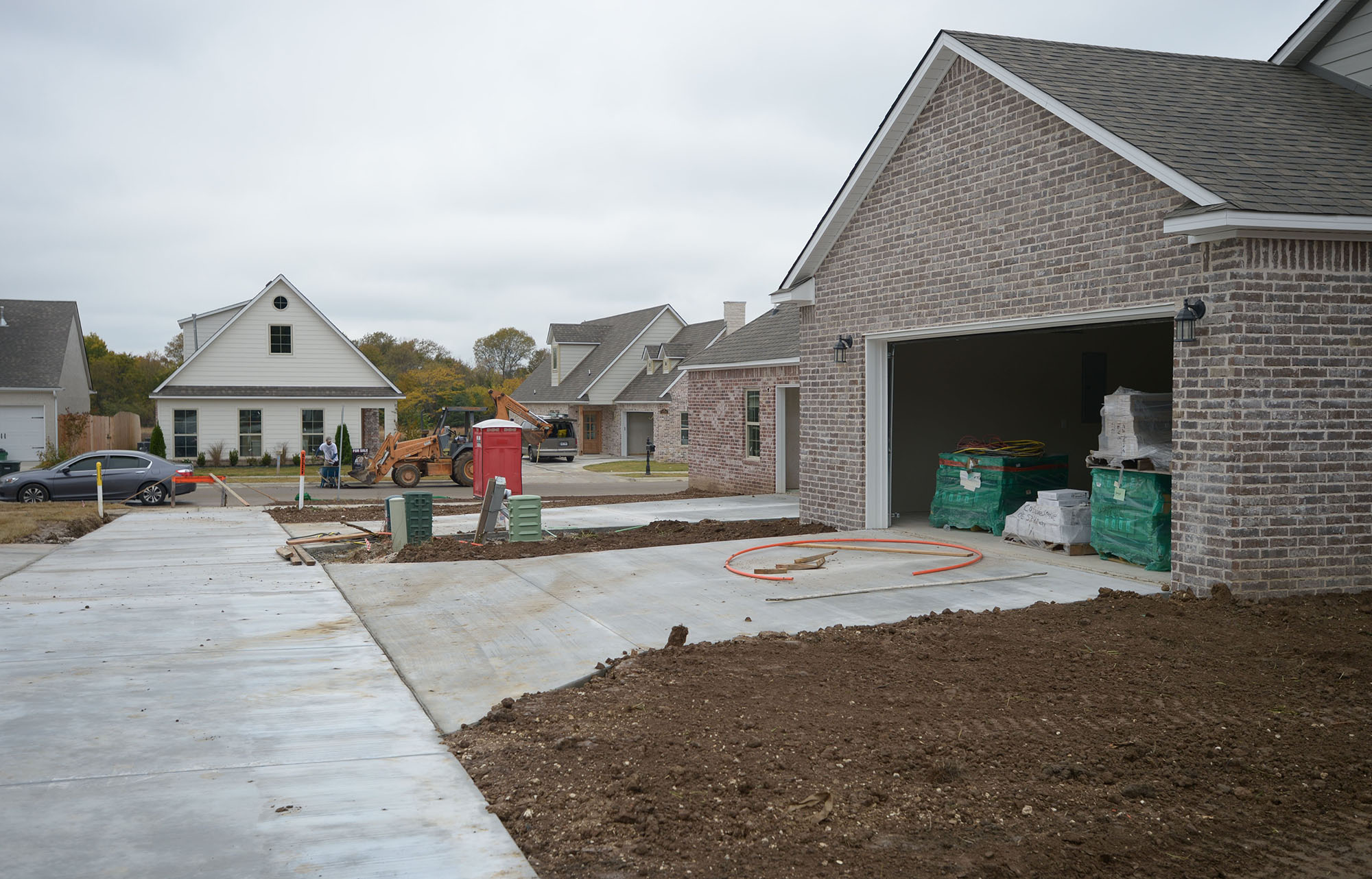FAYETTEVILLE -- Northwest Arkansas again added population to the urban areas of the region in the 2020 Census, meaning the region will receive a bump in federal money for transportation projects, transit, planning and other needs, estimated to be about $2 million.
"The big takeaway is that we're still growing," said Jeff Hawkins, outgoing director at the Northwest Arkansas Regional Planning Commission. "Population is an integral part as far as federal highway funds, and it is an integral factor in transit funding for capital and operating for transit providers in urban areas over 200,000. So that funding will be adjusted upward as a result of this increase."
The new urbanized population in the region is 373,687, an increase of 78,604 compared to 2010, according to Tim Conklin, acting director at Regional Planning. There were 150,509 housing units, an increase of 25,252 housing units in the urban areas. Urban areas in the region gained 11 square miles of area.
Those were higher percentage increases than Little Rock; Fort Smith; Jonesboro; Springfield, Mo.; Tulsa, Okla.; or Wichita, Kan. Springfield actually lost area.
The U.S. Census Bureau's urban-rural classification is a delineation of geographic areas identifying the nation's urban and rural areas.
Urban areas are densely developed territory and encompass residential, commercial and other nonresidential urban land uses.
Rural encompasses all population, housing and territory not within an urban area.
"Urban area designations do not follow city limits," Conklin told planners last week. "Keep that always in mind. Your entire city may not be in the Fayetteville-Springdale-Rogers, Arkansas-Missouri Urban Area."
The criteria used to determine urban area designations changed this census, Conklin explained. Housing unit density was used primarily instead of population density.
To qualify as an urban area, the territory identified according to criteria must encompass at least 2,000 housing units or a population of at least 5,000. That is a change from the previous minimum of 2,500 people, which had been in place since the 1910 Census.
"Once again, it doesn't follow city limits," Conklin said. "Parts of Rogers, Fayetteville, Springdale are in the Fayetteville-Springdale-Rogers, Arkansas-Missouri Urbanized Area. Other parts of your city are not; they're rural."
There was also a change in "jump distance" to other, contiguous urban areas from 2.5 miles to 1.5 miles. That resulted in several cities no longer being close enough to the Fayetteville-Springdale-Rogers, Arkansas-Missouri Urban Area to be a part of the larger Urban Area including Elkins, Pea Ridge and Prairie Grove.
How we got here
Fayetteville and Springdale were the two big cities with about 96% of the population for the region's urbanized area in 1990. In 2000, the urbanized area spilled over into Benton County; with Rogers and Bentonville added, the big four cities had about 91% of the urban population. In 2010, the big four made up 77% of the urban population, but some of the smaller cities were growing rapidly and impacting those numbers.
In 2020, with new criteria, the big four cities had 79% of the urban population.
That's important because the Federal Transit Administration and the Federal Highway Administration use population as part of their formulas to determine how much money comes to the region, Conklin said. But, exactly how much likely won't be known until 2024, he said.
Urban areas in Arkansas with over 200,000 people get suballocated funding. The share for Northwest Arkansas went up from 26.3% in 2010 to 29.1% in 2020, Conklin said. Planners think that will result in about $500,000 in additional funds for Little Rock Metro Plan and around $2 million-plus for Northwest Arkansas Regional Planning each year, he said.
Suballocated funding refers to a state receiving federal money and then, in turn, allocating a portion of that money to one or more subordinate agencies, like Northwest Arkansas Regional Planning. For example, federal highway money is apportioned to states, but a percentage is suballocated by departments of transportation for metropolitan, regional and local use.
That directly impacts how much money the Fayetteville-Springdale-Rogers, Arkansas-Missouri Urban Area will get for alternative transportation, like bike and pedestrian facilities, public transit, regionally significant transportation projects and metropolitan planning in the future.
In Arkansas, it also affects how funds are distributed by the Highway Department for transportation planning, Hawkins said. The Pine Bluff area dropped under 50,000 population in the 2020 Census, so it may not continue to have a Metropolitan Planning Organization.
If Pine Bluff loses its Metropolitan Planning Organization, those funds would then be split up seven ways instead of eight among the state's planning organizations, he said.
Northwest Arkansas Regional Planning receives transit money and allocates money to public transit providers.
Ozark Regional Transit is always on the hunt for funding opportunities and every little bit helps, according to Joel Gardner, executive director.
"Even small increases to the federal portion of our funding stream helps tremendously as we see the costs associated with fuel, parts, insurance and utilities grow," Gardner said.


